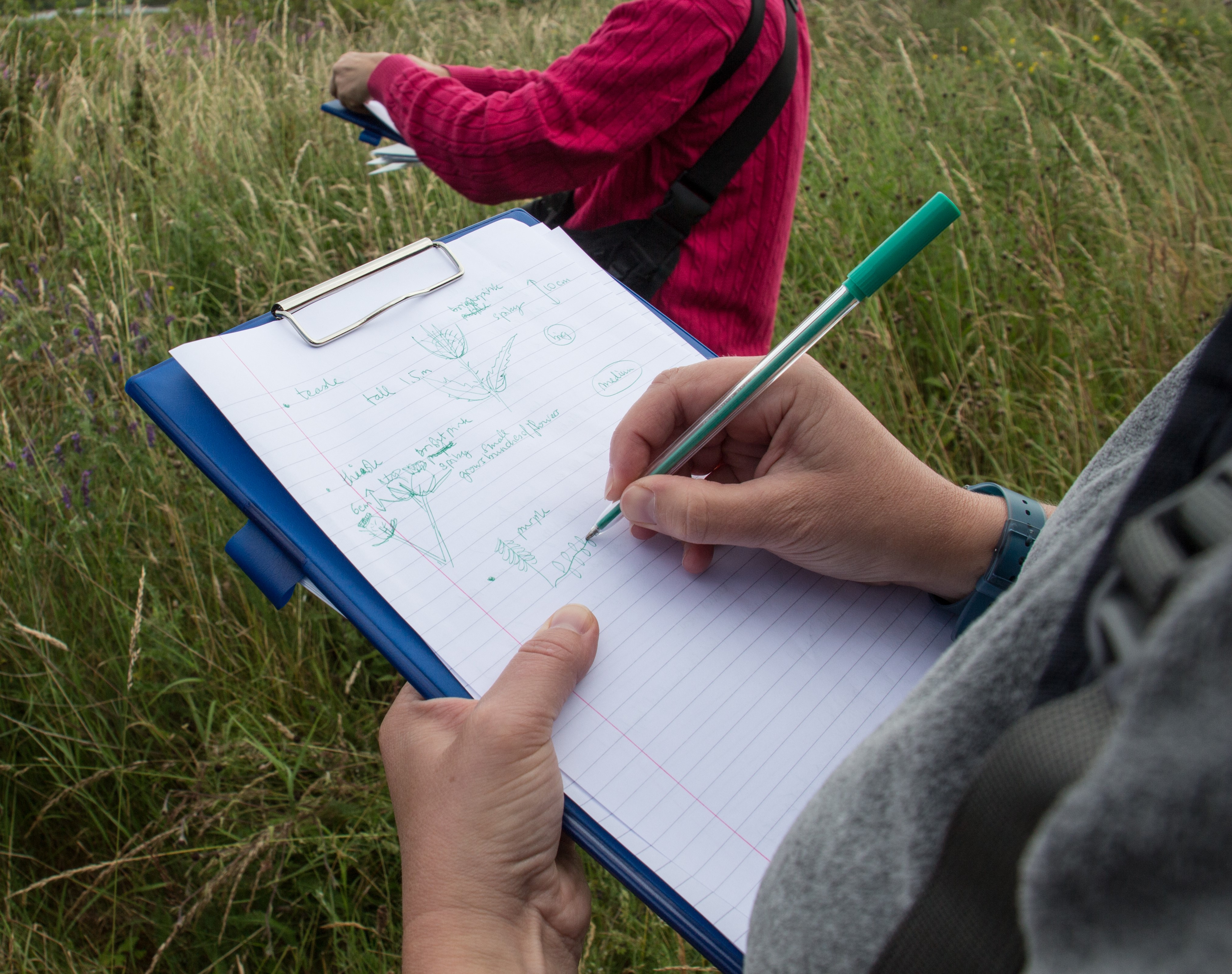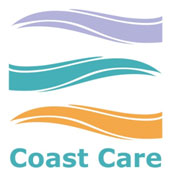
Micro-volunteering is any small positive action that combine together to have a big impact. It can be anything from signing an online petition or amplifying a charities message on social media to taking part in one of the many citizen science wildlife surveys or picking up a couple of pieces of litter every time you walk the dog. It is difficult to measure the impact of micro-volunteering, but imagine if everyone picked up one piece of litter every time they were out and about. The potential is huge!
jk
Reporting
One way you can help to protect our coastline is simply to keep your eyes open, and report anything you spot to the right people so it can be dealt with. Environmental organisations need as many eyes and ears out there as possible!

Reporting (Carolyn McPherson)
Urgent incidents
Phone 999 and ask for the Police if you see criminal activity, off-road driving or wildlife crime in action. Ask for the Coastguard if you see people in danger in the sea or on the coast. Do not try to resolve situations yourself. Record as much information as you can but do not put yourself in any danger.
jk
Fly tipping or litter problems
This should be reported to the local landowner or manager. Commonly this might be:
- Northumberland County Council at https://www.northumberland.gov.uk/SelfService/Report.aspx or 0345 600 6400
- Natural England: See http://lindisfarnennr.blogspot.com/p/contact-us.html for contact information.
- National Trust: Contact the team at 01665 576874 or NorthumberlandCoast@nationaltrust.org.uk.
Stranded seals
Lone pups are common. If they appear healthy, leave them for 24 hours and check again. Do not try to force them back into the sea. If the animal looks sick (coughing, sneezing, short of breath) or injured, report it to the British Divers Marine Life Rescue (BDMLR). Do not try to attend to the animal yourself. If you want to help, arrange a safe cordon around the animal and keep animals and dogs away until the medics arrive.
BDMLR: 01825 765546
Cetaceans
Any beaches whales, dolphins or porpoises should be reported to the Coastguard. If you want to help, arrange a safe cordon around the animal and keep animals and dogs away until help arrives.
Humber Coastguard: 01262 672317
Injured or sick birds
Report it to the RSPCA on 0300 1234 999 or contact a local wildlife rescue (Berwick Swan and Wildlife Trust on 01289 302882, or Blyth Wildlife Rescue on 07910 643122)
jk
Dead animals
Report it to Northumberland County Council on 0345 600 6400. They will report the incident to the relevant bodies and organise the removal of the carcass wherever possible.
If you find a dead bird, it’s also useful to check the legs for rings. If the bird is ringed, either remove the ring or take photographs of it and record the number and address on it. Report it to www.ring.ac.
jk
Historical finds
Report any human bones or burial sites and demolition of historic buildings to the AONB on 01670 620306.
jk
Northumberland County Council have a great reporting system at https://www.northumberland.gov.uk/SelfService/Report.aspx. You can use this site to report a problem with a footpath or byway, issues with animals, any fly tipping or damaged bins that you find among other things.
jk
Wildlife surveying
Another really great way to micro-volunteer is to record your wildlife sightings. Northumberland is under recorded, so your input is really valuable. After all, how can we look after the amazing species that we share our county with if we don’t know what’s here?

Wildlife surveying (Carolyn McPherson)
iRecord: You can use the website or free app to record any wildlife sighting, even common ones.
Big Hedgehog Map: Record any sightings of live or dead hedgehogs for this national survey. It is estimated that the number of hedgehogs in the UK has dropped from 30 million in the 1950s to about 1 million in 2019, so this is really important information.
Mammal Mapper: This is the place to record any sightings or signs of mammals that you come across.
https://www.mammal.org.uk/science-research/record-submission/
Plastic in Animals: Send photos of any wild mammal trapped in plastic that you find or of teeth marks in plastic litter.
https://www.mammal.org.uk/2020/02/plasticinmammals/
Eider Aware: This is a brand new project tracking the population of Eiders. Get more information and submit your sightings on the website.
https://www.xbordercurrents.co.uk/projects/eider-aware-north-east/
Project Puffarazi: Take photos or submit old photos of Puffins with food in their bill. This is part of a long-term study by the RSPB into their food supply.
https://www.rspb.org.uk/reserves-and-events/events-dates-and-inspiration/puffarazzi/
Swift Action: Submit any sightings of swifts and their nests. The British breeding population decreased by 57% between 1995 and 2016, partly due a lack of nesting habitat for them, so this is a great one to get involved in.
UK Little Owl Project: Submit any sightings of Little Owls, who are also in rapid decline.
http://www.littleowlproject.uk/index.php#about
Big Butterfly Count: This is the world’s biggest national butterfly survey, taking place in July and August. It’s very quick, taking just 15 minutes to complete. There are handy ID guides available on the website to help develop your skills.
https://www.bigbutterflycount.org/about
Garden Butterfly Survey: Set up a free account, record the butterflies that visit your garden (or chosen area) through the year and submit the results to build a national picture of the health of our butterflies.
http://www.gardenbutterflysurvey.org/
First Butterfly sightings: Record your first sightings of a variety of butterfly species. Butterfly Conservation do this every year to discover how our natural world is changing over time.
https://butterfly-conservation.org/butterflies/first-butterfly-sightings-2020
Migrant Watch: Record any sightings of Painted Lady or Hummingbird Hawkmoth to increase our understanding of these species migration from Africa.
https://butterfly-conservation.org/our-work/recording-and-monitoring/migrant-watch
Blooms for Bees: Download the app and watch a specific plant for just five minutes at a time. Record and take photographs of the bees that you see. This helps scientists to figure out discover which flowers are bumblebee favourites and understand more about how bees feed in our gardens and allotments.
http://www.bloomsforbees.co.uk/
Butterflies for the New Millenium: This is a place to record any and all butterflies you see.
National Moth Recording Scheme: This is a place to record your moth sightings.
https://butterfly-conservation.org/our-work/recording-and-monitoring/national-moth-recording-scheme
Tick Surveillance Scheme: If you find a tick on your body, remove it (safely) and send it to Public Health England to help them to monitor the extent of ticks and Lyme Disease.
https://www.gov.uk/guidance/tick-surveillance-scheme#tick-surveillance-scheme
The Ancient Tree Hunt: This project aims to find and record our local ancient trees. Ancient trees are an important part of our heritage, and also provide an ecosystem for many plants and animals. One tree can be home to hundreds of other species. It’s easy to get involved. Just keep your eyes open for old trees, photograph them and add them to the map.
https://ati.woodlandtrust.org.uk/add-a-tree/
FlyMapper App: This is a free app for recording fly tipping incidents as you come across them so that the problem can be better tackled.
jk
Are there any missing from the list? Is there anything you’d like to get involved in but don’t have the skills? Let us know, as we might be able to run training sessions with other interested volunteers to get you started. If you get involved with anything and would like to log your hours, please let us know.
jk
Em
